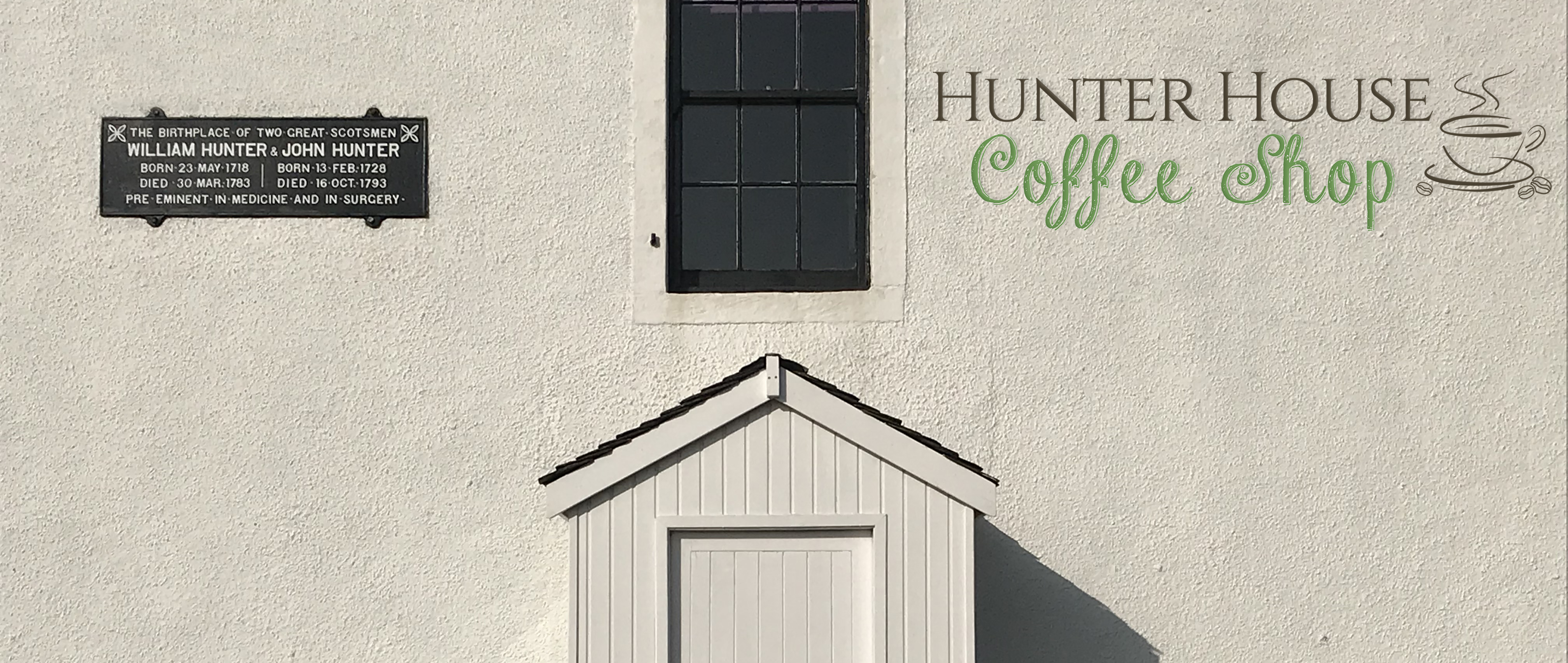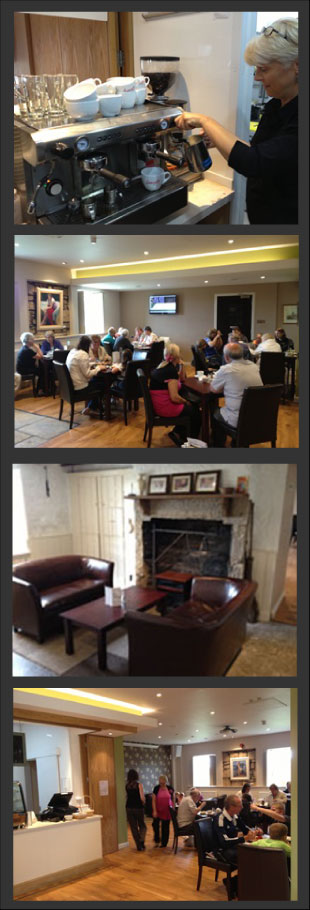
Open as usual!
Opening Times
Monday - Saturday
9am - 4pm
*No booking required, tables cannot be reserved unfortunately
____________________________________________________________________________________________________
Hunter House is a community hub in the heart of Calderwood, which is owned and run by Calderwood Baptist Church. We were able to buy and renovate the historic building in 2012 and re-opened this community landmark in January 2013. We offer a wide range of activities within Hunter House, which are run by both the church and different community groups. We are also delighted to have the very popular Hunter House Coffee Shop operating in the building and serving our local community.
Discover Hunter House...

Hunter House Coffee Shop serves a wide variety of food including paninis, toasted sandwiches and a range of homemade soups. It also has an extensive breakfast menu, which includes 8 item breakfasts and hot filled rolls.
We serve great quality Italian coffee, various teas, delicious hot chocolate and a wide range of cakes, scones and treats. We also have a full kids' menu, which means that whether you are looking for lunch for the family, afternoon tea with friends or breakfasts served all day, Hunter House Coffee Shop is the place for you!
Hunter House has its own private car park with ample disabled and family parking bays and the coffee shop also has full disabled access for your convenience.

But don't just believe us, here's what some of our customers say:
"I can't believe what has been done with this building - it really is an incredible transformation. We are made so welcome by the staff and the food is always excellent."
"We love your coffee, it really is one of the best cups of coffee I've had."
"I have lived in East Kilbride all my life and have never been in this historic building. The food and the atmosphere in the coffee shop is excellent and so we just love coming again and again."
History
The 75 acre estate of Long Calderwood was purchased by John Hunter, the Hunter brothers' father in 1717. Hunter House is the original Long Calderwood Farm and may be the oldest building in East Kilbride. This house was the birthplace and childhood home of the famous local brothers, William and John Hunter.
Born on 23 May 1718, William Hunter became a famed teacher of anatomy and pioneered the study of gynaecology.
Having worked in medical practice in Hamilton, William travelled to London to begin studying midwifery and he later began building a surgical and midwifery practice, and investigating female reproductive anatomy using animals. William Hunter Lectured regularly for the rest of his life attracting pupils from the continent and North America. His pupils' notes of his lectures are the only record of some of his discoveries.
In 1754 William became a member of the Society of London Physicians, which in 1757 started publishing Medical Observations and Inquiries, in which he was to publish some of his important cases. Hunter's surgical practice became so successful that it was not until 1756 that he left the Company of Surgeons and joined the Royal College of Physicians. William went on to form a connection with the royal family, when in 1761, Queen Charlotte became pregnant and the king was advised to employ William to look after her. The safe birth of a son in August 1762 was followed on 18 September by William's appointment, as physician-extraordinary to the queen. He attended all her pregnancies until his death and was on friendly terms with both the king and queen.
William died on 30 March 1783 and was buried in a vault in St James's Church, Piccadilly, where there is a monument to his memory. William's reputation has suffered through his failure to publish much of his work although his significant discoveries are remembered to this day in the museum built in his honour, The Hunterian at Glasgow Univeristy.
William's brother, John Hunter, was also a surgeon and anatomist, and a major figure in the development of experimental medicine. He was born on 13 February 1728, the youngest of the ten children. Unable to find a vocation in Scotland and still undecided on his future John Hunter moved to London in 1748 to assist his brother William. John’s primary job was in the dissecting room and, recognizing John's skill in dissection, his brother adopted him as his assistant. The position suited John's needs and his temperament. Over the next decade John pursued with his usual intensity, although in relative obscurity, a series of novel investigations both alone and in co-operation with his brother.
In 1754, he entered St George's Hospital as a surgical pupil. With England at war and in need of surgeons, he joined the army as a staff surgeon in October 1760. John served with the army in Portugal in 1762. For John such service provided the formal qualification for surgical practice he required. The war years were the capstone of an educational process that not only prepared him as the leading surgeon he soon became but also served as an introduction to the human and comparative physiology that became the primary interest for the rest of his life.
In spring 1763, John returned to London from Portugal. The war experience had made him a surgeon. It had also provided a career path within the army structure which would over the next thirty years lead him to increasingly responsible and respectable offices of authority: as surgeon-extraordinary to the king in 1776, surgeon-general of the army, and inspector of its hospitals in 1790. Primarily from his work during these years he produced his first major scientific work and subsequently earned him election as a fellow of the Royal Society on 5 February 1767 and the Copley medal in 1787.
On 22 July 1771, John married Anne Home the daughter a former army surgeon, whom he had met during the war. The Hunters had four children, but only two survived infancy.